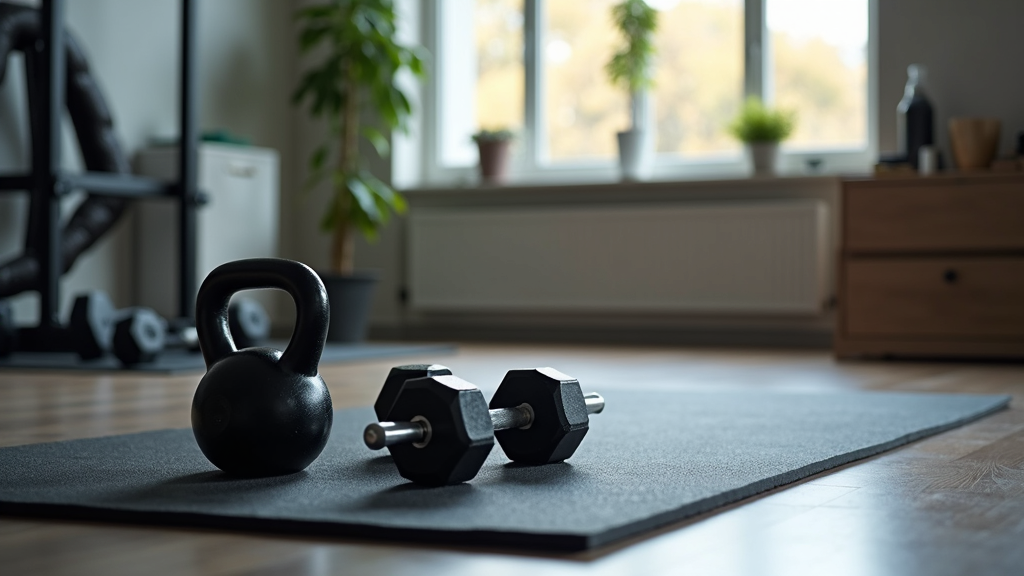Building a full body workout plan is my go-to approach for fitness when time is tight but getting results still matters. Hitting all the major muscle groups in one session means every trip to the gym counts. It works whether you’re just starting out or looking to shake up a stale routine. In this article, I’m sharing my take on the best full body workout plan. I’ll walk you through why these routines work so well, hand out a sample plan you can use today, break down some key methods, and offer up my favorite tips to keep you moving forward week after week.

Why Full Body Workouts Make Sense
Full body workout plans have picked up a lot of attention recently. I find them super useful for anyone who doesn’t have hours to spend at the gym multiple days a week. Instead of splitting your sessions into separate muscle groups, you train everything together; chest, back, legs, arms, core, and shoulders all get some attention in one workout. This approach is backed by plenty of fitness coaches and research, especially for people who want to build strength, lose body fat, or feel more athletic without living in the gym.
Training your whole body in one go gives you a few important perks:
- Efficiency: You target all muscles quickly, good for busy schedules.
- Better Recovery: Spacing out training days lets your body really recover instead of smashing the same muscle group two days in a row.
- Variety: Plug in different exercises each session to keep things interesting and your body guessing.
- Great for Strength: Compound lifts like squats and deadlifts are a central focus and help you get stronger.
Setting Up Your Full Body Workout Plan
The basic idea is straightforward; pick a handful of important exercises that use all the big muscle groups, toss in some smaller moves for spots that need extra help, and adjust based on your fitness level or any injuries. I’m laying out what a typical workout looks like, but you can swap moves in or out depending on what equipment you have or what you genuinely like to do.
Main Components
- Squat or Leg Press: Targets quads, glutes, hamstrings, and core.
- Push Exercise (Bench Press, Push ups, or Overhead Press): Works your chest, shoulders, and triceps.
- Pull Exercise (Row or Pullups): Focuses on back and biceps.
- Hinge Exercise (Deadlifts or Hip Thrusts): Excellent for glutes, hamstrings, and lower back.
- Core Movement: Think planks, hanging leg raises, or cable chops for overall core strength.
That’s your foundation. With this combo, your full body gets a workout every single time you hit the gym.
A Sample Full Body Workout Plan
I build this plan for busy folks who crave results without making things way too complex. If you have two to four days a week for training, you’re all set. Just make sure you rest at least a day between sessions so your muscles have the chance to recover and get stronger.
Day 1 Example
- Squat (Barbell, Dumbbell, or Bodyweight); 3 sets of 8-10 reps
- Bench Press or Push ups; 3 sets of 8-10 reps
- Bent Over Row or One Arm Dumbbell Rows; 3 sets of 8-10 reps
- Romanian Deadlift or Hip Thrust; 3 sets of 8-10 reps
- Planks or Hanging Knee Raises; 3 sets of 30 seconds to 1 minute
Day 2 Example
- Deadlift (Barbell, Dumbbell, or Kettlebell); 3 sets of 6-8 reps
- Overhead Press or Dumbbell Shoulder Press; 3 sets of 8-10 reps
- Pulldowns or Pullups; 3 sets of 6-10 reps
- Step ups or Lunges; 3 sets of 8-10 reps per leg
- Cable Woodchoppers or Russian Twists; 3 sets of 12-15 reps
For those who train three or four times a week, just rotate between these two outlines. You can swap in new exercise variations for fresh challenges now and then.
How to Progress for More Results
Sticking to the same plan keeps things easy, but the real gains show up with small adjustments over time. Here’s what I do when I want to take things up a notch:
- Add Weight: Once you handle all sets with great form, toss on 2.5 to 5 pounds.
- Increase Reps: Bump up your repetitions by one or two each set when the current range feels manageable.
- Experiment with New Moves: Make the switch from bodyweight squats to goblet squats or from dumbbells to barbells as you get stronger.
- Trim Rest Times: Shave a few seconds off your rest to step up the challenge.
Logging each session, either in your phone or notebook, is a seriously helpful habit. It’s the best way to spot what’s working and when you need a switch up.
Troubleshooting: Common Roadblocks
Fatigue
Full body workouts burn a lot of energy. If you’re constantly wiped, try dropping the number of sets or separating your training over three days instead of two, especially if you’re new to lifting.
Stubborn Muscles
If one area (such as biceps or calves) lags behind, toss in a single quick set at the end for that muscle group. These “finishers” help lagging muscles catch up.
No Gains
If nothing budges, check your nutrition and sleep. Lifting more won’t work if your body isn’t getting what it needs. Sometimes taking a week to rest and let your body bounce back works wonders.
Tips to Make Full Body Workouts Work for You
- Don’t Skip Warming Up: Five minutes on the bike or a few dynamic stretches can lower your risk of injury.
- Form Comes First: Quality reps at a lighter weight matter way more than ugly, heavy lifts.
- Consistency Beats Perfection: A steady routine you stick to always wins over a “perfect” plan that drops off quickly.
- Add Some Conditioning: End your workouts with a farmer’s walk, sled push, or brisk walk; it keeps things fun and heart healthy.
Beyond these tips, try mixing up your exercises now and again to keep both your body and mind interested. Swap out a squat for a lunge or try different grips on your rows. Little changes make things fresh and might even highlight new strengths or weaknesses.
Real-World Benefits of Full Body Workout Plans
Switching some of my clients from split routines to full body workouts led to boosts in strength, motivation, and their ability to stay on track with fitness. Life gets busy; it’s good to have a structure where missing one day doesn’t throw off your whole week.
On top of saving time, full body routines lay the groundwork for nearly any fitness goal. If your aim is building muscle, shedding fat, or just moving better, you can ramp these plans up or dial them back as needed. They’re also flexible options if you play other sports, do outdoor activities, or want to keep up with the kids at the park.
These workouts work for every stage, from true beginners to seasoned gymgoers. You can easily make them as challenging as you want, just by adjusting weights, exercise variations, or intensity. That flexibility is what makes full body training a long-term winner.
Frequently Asked Questions
Question: How many days per week should I do full body workouts?
Most people succeed with two to four sessions each week. Always leave at least one rest day in between sessions for your muscles to recover. Beginners should stick with two, then work up to three or even four as your body adapts.
Question: Can beginners do these routines?
Yes, no doubt. Just adjust the weights, reps, and exercise selection to your ability. Make sure to get the moves right before worrying about doing more.
Question: Are full body workouts good for fat loss?
Absolutely, especially when paired with a solid nutrition plan. Since you’re moving a lot of muscle every time, you’ll burn a decent amount of calories each workout.
Question: How long should each session take?
Keep things moving with minimal down time, and you’ll finish up in 45 to 60 minutes, including warmup and cooldown.
Wrapping Up
Full body workout plans are a straightforward and proven way to get results without being chained to the gym. Stick with the basics, take small steps forward, and pay attention to how your body feels as you go. Over time, this method will help you get stronger, fitter, and more confident in what your body can do. The best workout plan is the one you’ll actually stick with, so pick what fits your lifestyle and keep at it the results will follow.
Thanks for checking this post out feel free to to leave a comment, ask questions and be sure to look on the other posts for everything fitness. e one you’ll actually stick with, so pick what fits your lifestyle and keep at it the results will follow.



I totally get where you’re coming from! As someone who spends a lot of time in front of a computer too, I know how easy it is to get caught in the whole “sitting all day” trap. I mean, when you’re immersed in work, parenting or whatever else, it’s hard to think about moving. But when I really start thinking about it, it’s kind of alarming how little we get up and move sometimes, especially when we’re homebodies.
My daughter always says: Full body work out time!” What I think is the work out, ends up being the warm up and I’m easily out of breath. I’m young and skinny. I vouch we ALL need to work out; but I need a push from a stranger.
I’ve realized that even just small changes—like stretching every hour or squeezing in a few bodyweight exercises—can make a huge difference in how I feel. It doesn’t have to be a full workout session to feel better.
Is it true that walking for 10 minutes daily make a difference?
You’re totally not alone so many of us get caught in that same cycle. Sitting for hours while working, parenting, or just living life indoors can sneak up on us. It’s easy to think, “I’m young, I feel fine, do I really need to move more?” But the truth is, movement is essential for everyone—regardless of age, weight, or lifestyle.
Your daughter saying “Full body workout time!” is actually gold what a great reminder to get moving. And yes, when you’ve been mostly sedentary, even a “warm-up” can feel like the whole workout. That doesn’t mean you’re out of shape it just means your body is asking for a little more regular movement.
Walking just 10 minutes a day daily because one of the most important way is just 10 minutes of brisk walking a day can help strengthen your heart and improve circulation. Studies show that short walks throughout the day can lower blood pressure and reduce the risk of heart disease.